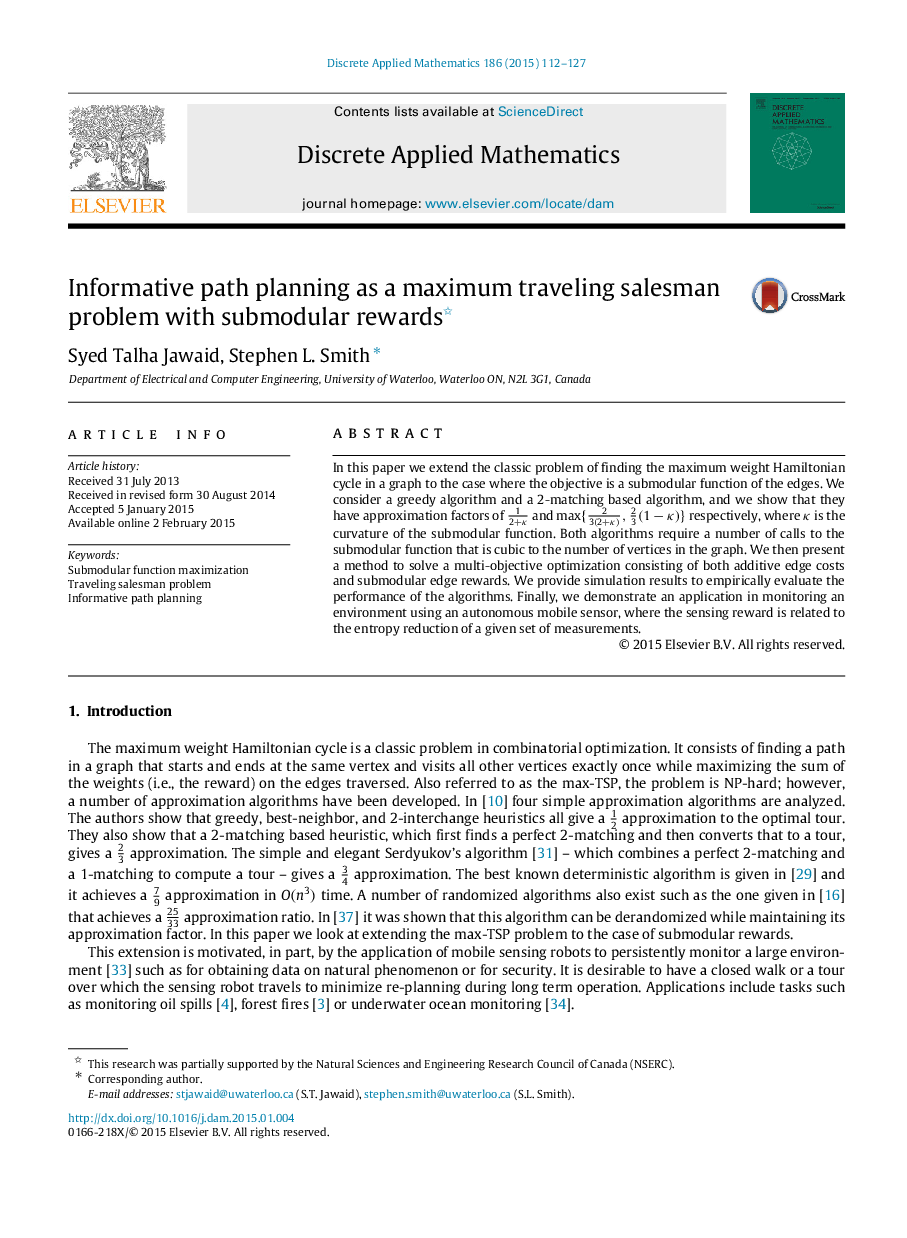| Article ID | Journal | Published Year | Pages | File Type |
|---|---|---|---|---|
| 418922 | Discrete Applied Mathematics | 2015 | 16 Pages |
In this paper we extend the classic problem of finding the maximum weight Hamiltonian cycle in a graph to the case where the objective is a submodular function of the edges. We consider a greedy algorithm and a 2-matching based algorithm, and we show that they have approximation factors of 12+κ and max{23(2+κ),23(1−κ)} respectively, where κκ is the curvature of the submodular function. Both algorithms require a number of calls to the submodular function that is cubic to the number of vertices in the graph. We then present a method to solve a multi-objective optimization consisting of both additive edge costs and submodular edge rewards. We provide simulation results to empirically evaluate the performance of the algorithms. Finally, we demonstrate an application in monitoring an environment using an autonomous mobile sensor, where the sensing reward is related to the entropy reduction of a given set of measurements.
